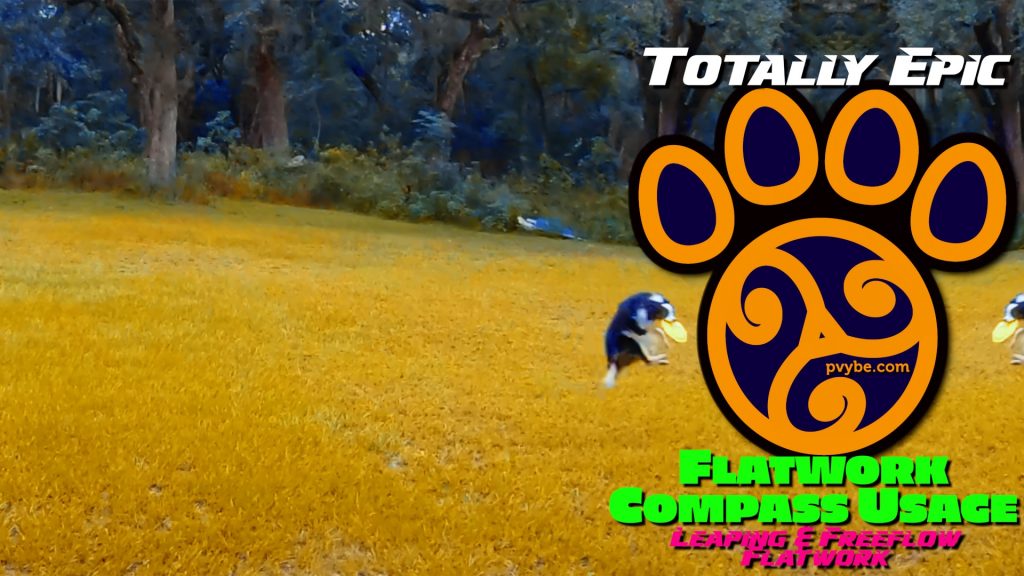
Epic Flatwork Compass for Leaping & FreeFlowing Flatwork
Communication on the fly is a key element of disc dog freestyle and disc dog game play. It is a good idea to have a clear and concise communication system to make on the fly decision making a successful endeavor. Nobody wants to be handcuffed by pattern training. The Flatwork Compass provides a simple and elegant communication system that is based upon natural movements and canine/human pressure and body language.
In this lesson, Epic and I try to work some leaping with a standard Flatwork Compass The Flatwork Compass is a disc dog form that separates the Flank from the Pass, creates a reliable trigger, and exposes the team to all of the key elements of Team Movement. https://www.youtube.com/watch?v=xW7Czz-7ows&list=PL8zWXaJfi1-synGOkBJ7u4p-WkotsL3LR... More and then move into some on the fly decision making and large scale flatwork using the elements and communication concepts of the Flatwork
The Flatwork Compass is a disc dog form that separates the Flank from the Pass, creates a reliable trigger, and exposes the team to all of the key elements of Team Movement. https://www.youtube.com/watch?v=xW7Czz-7ows&list=PL8zWXaJfi1-synGOkBJ7u4p-WkotsL3LR... More and then move into some on the fly decision making and large scale flatwork using the elements and communication concepts of the Flatwork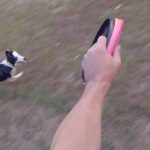 Flatwork is the stuff that happens between the catches. How the team moves and transitions, often without the disc, is flatwork. Flatwork concepts in disc dog are taken from the agility and herding... More Compass.
Flatwork is the stuff that happens between the catches. How the team moves and transitions, often without the disc, is flatwork. Flatwork concepts in disc dog are taken from the agility and herding... More Compass.
The Pattern
The Flatwork Compass relies on a simple pattern, and it is this pattern that creates a framework to ensure that dog and handler learn how to move together in a standard fashion.
The pattern is an alternating series of directions and shapes: Clockwise Flank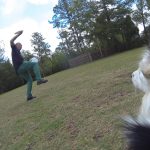 Out to the side of the handler is the Flank. If the dog is out to the handler's right or left the dog is on Flank. If the dog is moving with the... More and Counter Clock Flank, Clockwise Pass
Out to the side of the handler is the Flank. If the dog is out to the handler's right or left the dog is on Flank. If the dog is moving with the... More and Counter Clock Flank, Clockwise Pass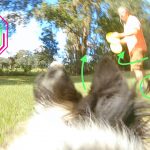 A Pass or Passing is a linear Team Movement maneuver that has the dog running or moving past the handler in close proximity, crossing or breaking the plane of the handler's body. and Counter Clockwise Pass. This alternating, this then that, framework creates a simple and elegant lesson that is both easy to execute and easy to read both the similarities and differences between all four skills.
A Pass or Passing is a linear Team Movement maneuver that has the dog running or moving past the handler in close proximity, crossing or breaking the plane of the handler's body. and Counter Clockwise Pass. This alternating, this then that, framework creates a simple and elegant lesson that is both easy to execute and easy to read both the similarities and differences between all four skills.
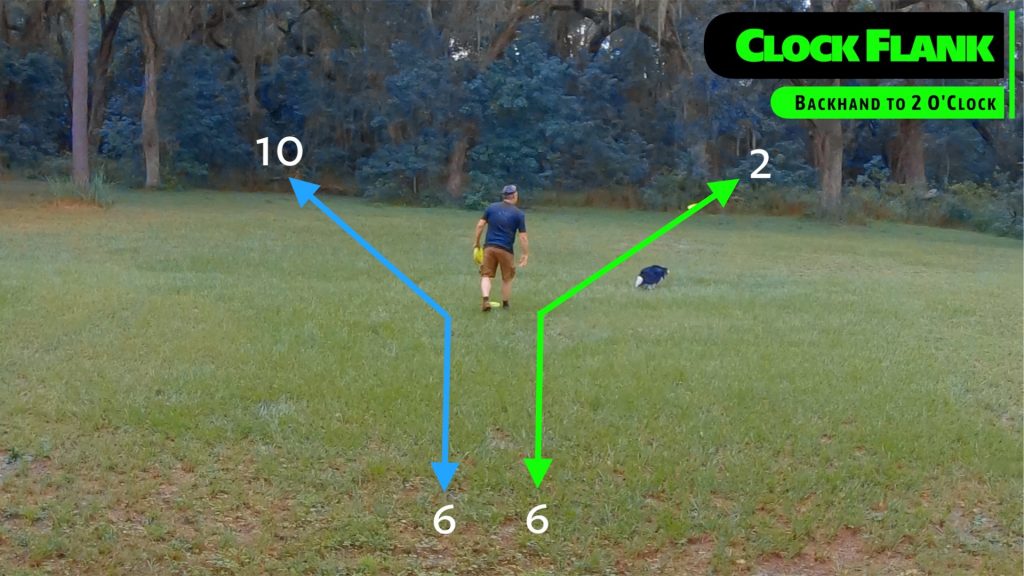
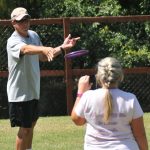 The Backhand toss is the traditional disc throw. While it might not be the easiest throw of them all, it is the easiest to throw a hundred yards, and it is the easiest... More to 2 o clock | Throw 2: Sidearm/Overhand Wristflip to 10 o clock | Throw 3: Backhand to 6 o clock | Throw 4: Sidearm/Overhand Wrist Flip to 6 o clock
The Backhand toss is the traditional disc throw. While it might not be the easiest throw of them all, it is the easiest to throw a hundred yards, and it is the easiest... More to 2 o clock | Throw 2: Sidearm/Overhand Wristflip to 10 o clock | Throw 3: Backhand to 6 o clock | Throw 4: Sidearm/Overhand Wrist Flip to 6 o clockRinse & Repeat
Relying on the clock dial in relation to the handler, 12 o clock being directly out in front of the handler makes spatial awareness and direction as simple as it can be made. It also eliminates the left / right conundrum of whether or not we are talking about the dog and that left and right changing based upon the dog’s direction of movement. Our convention is that Green is clock and Blue is counter.
Simply alternate clock then counter: 2 o clock… 10 o clock… clockwise to 6 o clock, counter clock to 6 o clock. 4 throws, all 4 directions of team movement. Doing them in order both challenges the team to be clean and efficient and ensures that all directions get equal attention.
Blocking With Pressure
Getting set up efficiently is a key part of disc dog freestyle. It is not often practiced as a discrete skill, and it’s almost never practiced in a systemic manner.
When the dog is returning to the handler after each rep, the handler has to wrangle the dog. This is done by blocking the dog with positional pressure. This positional pressure can be active or static depending upon the desired intensity.
The pressure is applied primarily with the legs, but can and often should be supplemented with the upper body and the disc. Pressure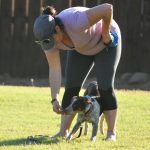 Pressure comes in many forms in dog training. Positional Pressure, Performance Pressure, Environmental Pressure, the Plane of the handler’s body. Pressure is a fact. How you wield it or leverage it is up... More is applied by the leg that is furthest away from the dog being forward. This forward position turns the handler’s body into the dog on approach and sets up Front
Pressure comes in many forms in dog training. Positional Pressure, Performance Pressure, Environmental Pressure, the Plane of the handler’s body. Pressure is a fact. How you wield it or leverage it is up... More is applied by the leg that is furthest away from the dog being forward. This forward position turns the handler’s body into the dog on approach and sets up Front Front is a stable position directly in front of the handler. Front is an traditional obedience skill. Usually your dog sits in this position, but standing is often acceptable as well, especially in... More position before the dog hits the handler. If the pressure is not applied before the dog arrives at the handler, the dog is likely to slide by.
Front is a stable position directly in front of the handler. Front is an traditional obedience skill. Usually your dog sits in this position, but standing is often acceptable as well, especially in... More position before the dog hits the handler. If the pressure is not applied before the dog arrives at the handler, the dog is likely to slide by.
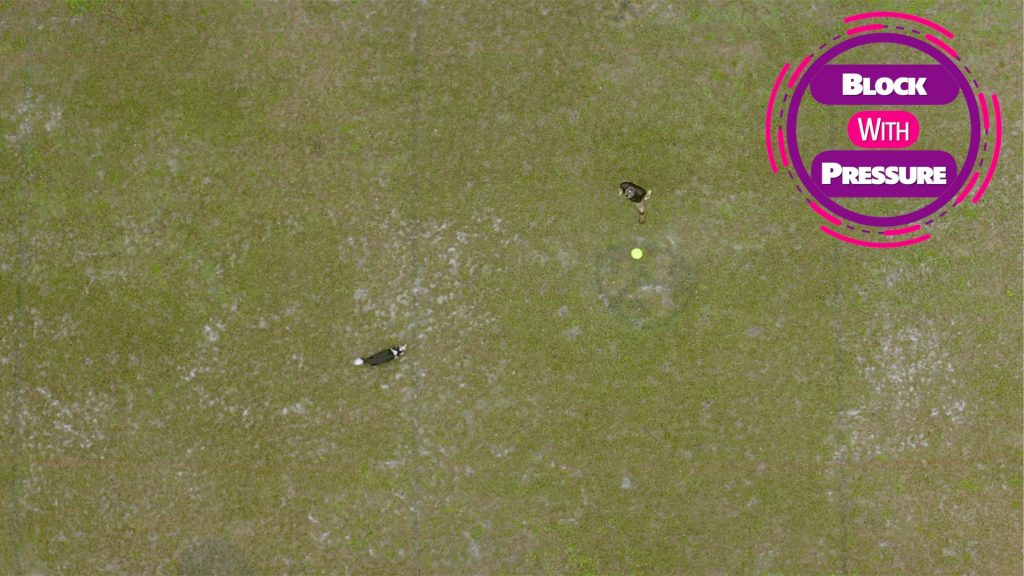
Throw Well and Throw With Intent
Throwing with Intent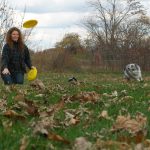 Throwing with intent means delivering discs with the intent to make the dog leap or look good. This skill is extremely important for teaching a dog to leap reliably and for enhancing a... More is a key aspect of the Flatwork Compass. The handler must have the situational and spatial awareness and be able to read the dog in order to throw with intent. This can be a tough lesson to learn and it can be difficult to develop the skills on the fly with your rabid frizbeast rampaging all over the field steamrolling any human and obstacle in her path.
Throwing with intent means delivering discs with the intent to make the dog leap or look good. This skill is extremely important for teaching a dog to leap reliably and for enhancing a... More is a key aspect of the Flatwork Compass. The handler must have the situational and spatial awareness and be able to read the dog in order to throw with intent. This can be a tough lesson to learn and it can be difficult to develop the skills on the fly with your rabid frizbeast rampaging all over the field steamrolling any human and obstacle in her path.
The simple framework of the Flatwork Compass simultaneously sets up a simple learning and training opportunity and poses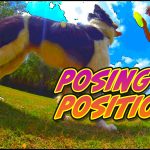 Posing is a communication tool for throwing discs to dogs (or people). A pose is a frozen moment of a throw; a key moment of the backswing perhaps, or a flashy presentation of... More a serious challenge. The pattern makes the reading and situational awareness quite easy but challenges the handler to put it in the right place at the right time.
Posing is a communication tool for throwing discs to dogs (or people). A pose is a frozen moment of a throw; a key moment of the backswing perhaps, or a flashy presentation of... More a serious challenge. The pattern makes the reading and situational awareness quite easy but challenges the handler to put it in the right place at the right time.
Dog Sees the Release
The dog actually seeing the release is an important piece of the team movement and catching puzzle. Without it, the handler is really on the hook for making perfect tosses at the same time the dog is on the hook for saving the handler’s bacon. That might be exciting, but it is not a recipe for success.
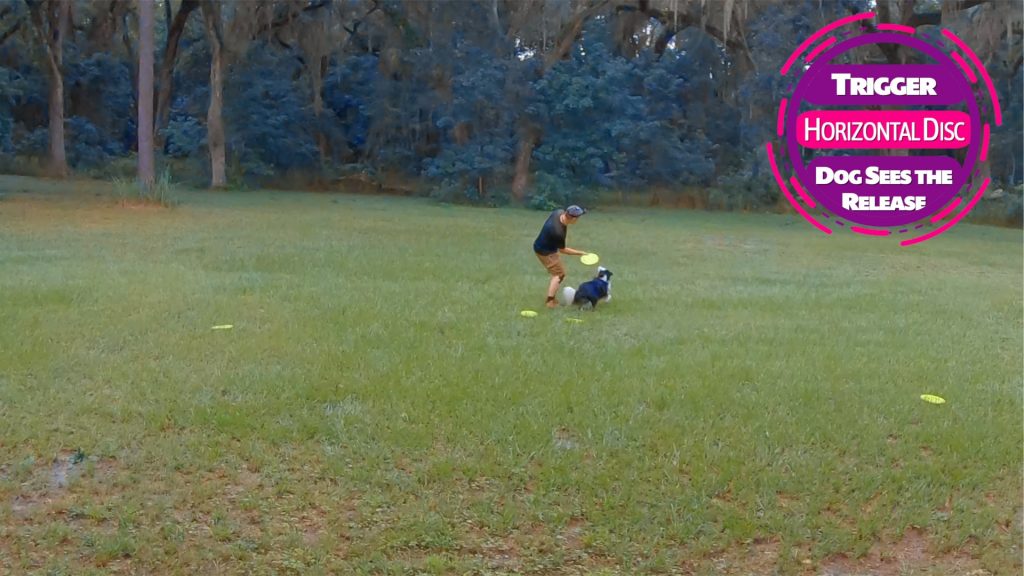
A well executed Flatwork Compass teaches dog and handler to hook up, with intent and understanding, on every throw. It sends the throw on a direct line from the handler’s hand to the dog’s mouth with both members of the team cognitively and cooperatively executing their job and being responsible for the team’s function.
If the dog goes… Don’t Throw!
Expressions in Flatwork
The team movement and athletic concepts and skills from the Flatwork Compass are exactly the same as the concepts and skills in Flatwork. The Compass is just the essence of that team movement and athleticism.
The positional pressure and human / canine communication is standard and the throwing motions and athletic movements are also standard athletic locomotion. This is how throwers move and it is how dogs move with humans.
Flank
The Flank is more than “out to the side” or “running in a circle”. It is directional movement with the handler. It is not antagonistic or oppositional in nature at all.
Stepping forward in the direction we are throwing helps the dog to move with and give to that pressure. The whole flanking process in the Flatwork Compass teaches the dog to bounce out in the direction the handler is moving when pressure is applied.
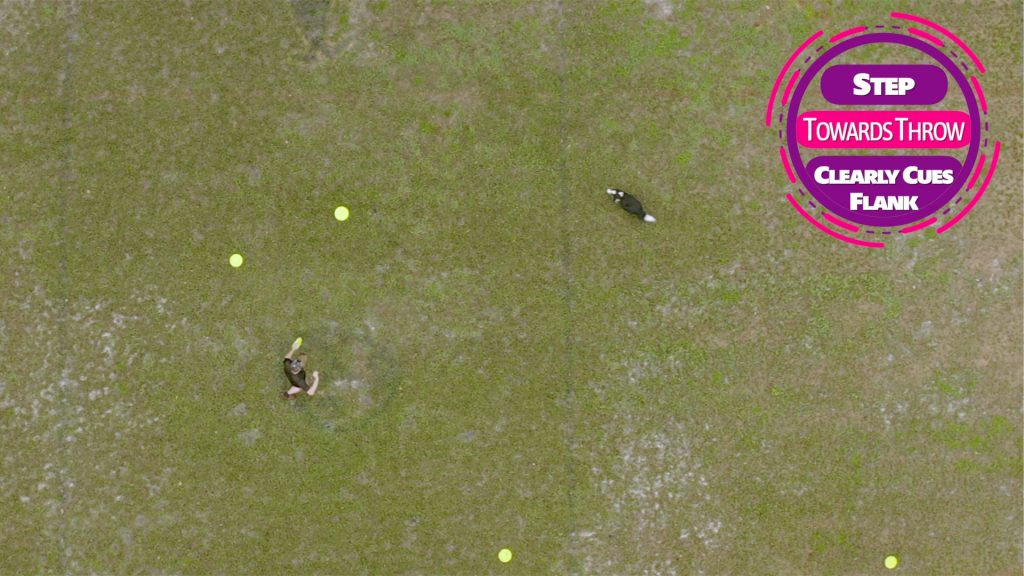
Pass
The Pass is an oppositional movement. The dog approaches the handler, running at us, then leaves in a straight line in pursuit of the disc.
The Passing moves in the Flatwork Compass are completely focused on controlling this operation and making it a team movement. The antagonistic pressure to start holds the dog and keeps him honest until we switch the feet and start to pull with pressure in the intended direction.
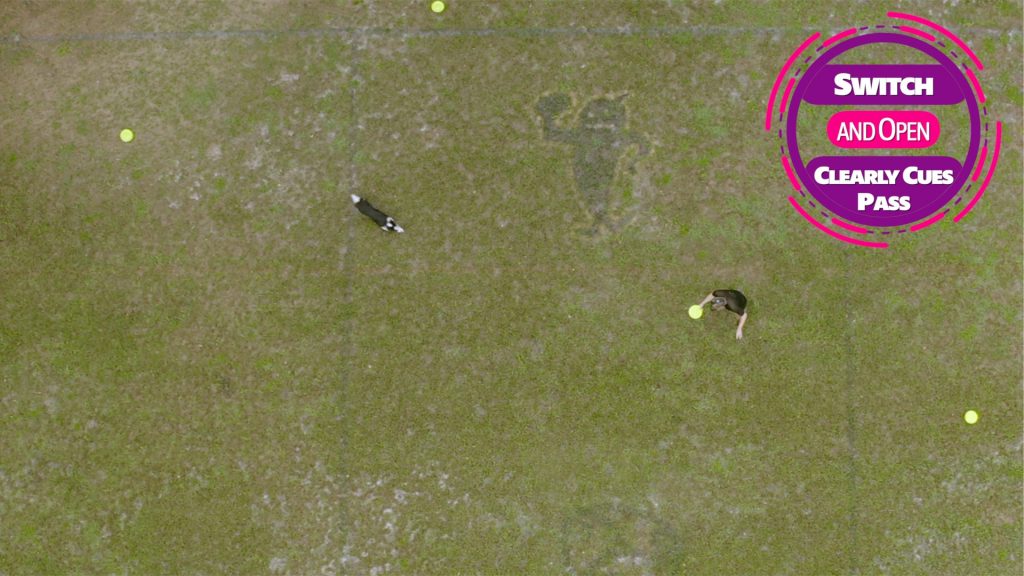
The Flatwork Compass takes control of the Passing maneuver and makes it highly unlikely that you will get steamrolled or pressured by your dog whil Passing. It puts the handler in control and makes the skill a team movement.





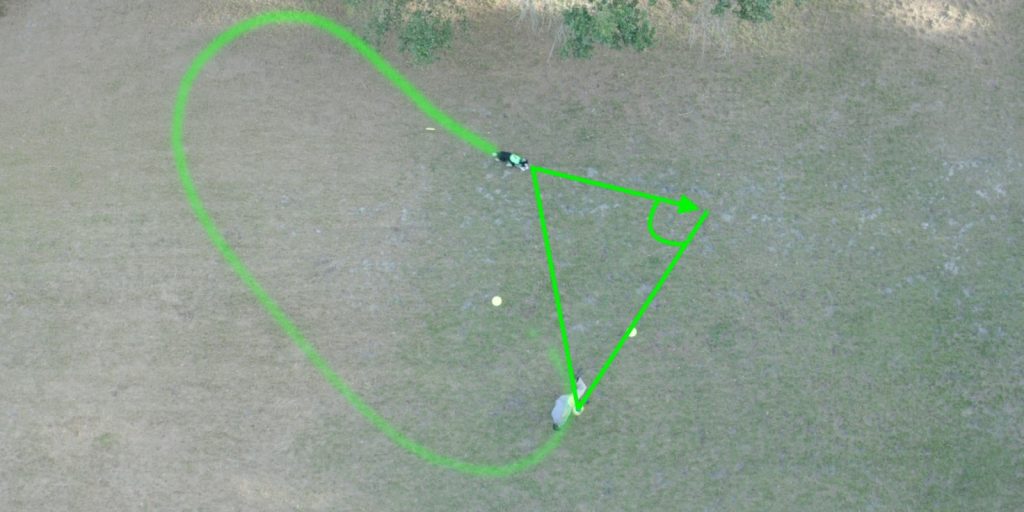
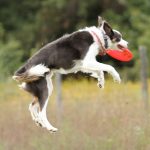
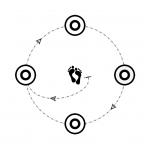

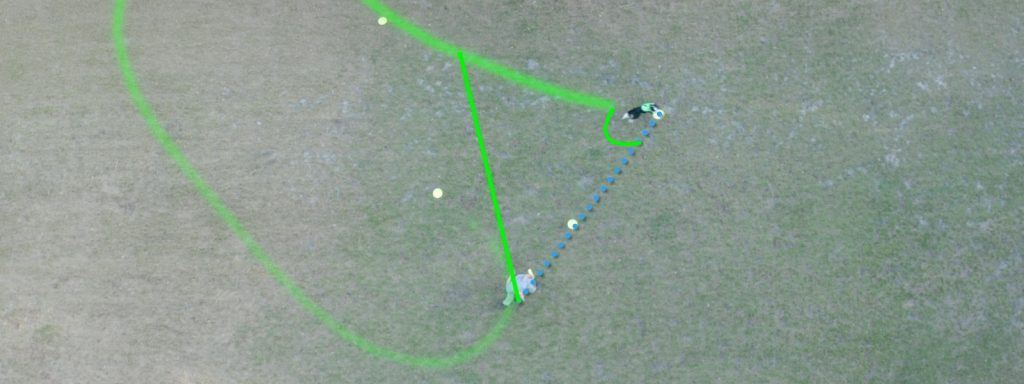
Responses